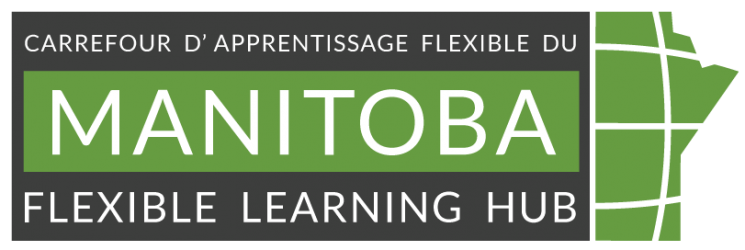
Seven Frequently Asked Questions About Using Multimedia in Online Courses
written by Ariful Shanil
Content reviewed 2025
Inspired by the Quality Matters white paper, Beyond Video: Harnessing Multimedia for Engaging Online Courses (February 2025), this resource page explores seven frequently asked questions about multimedia in online education.
1. What are the key benefits of incorporating multimedia beyond just video into online courses?
Multimedia in online courses extends beyond video to include audio, voiceover slide presentations, screencasting, and immersive videos, each offering unique pedagogical advantages. Audio is excellent for building instructor presence through announcements and feedback, offering a personal and detailed touch while being easy and quick to produce. Voiceover slide presentations efficiently deliver lecture-style content, especially with impactful visuals rather than dense text. Screen casting is highly effective for demonstrating processes, software, or problem-solving, allowing learners to see and hear explanations simultaneously. Immersive videos, like virtual field trips, can create engaging, active learning experiences by immersing students in remote environments. Utilizing a variety of multimedia formats caters to different learning preferences and accessibility needs, ultimately enhancing learner engagement and understanding.
2. How should instructors determine which type of multimedia is most suitable for their teaching purpose?
The specific pedagogical goal should drive the choice of multimedia. First, identify the purpose of the message: is it to build instructor presence, explain a complex process, deliver a lecture, or provide feedback? Then, consider which medium best facilitates this purpose. For instance, video excels at establishing instructor presence and demonstrating scenarios, while audio is ideal for personalized feedback and reaching learners with limited bandwidth. Voiceover slides effectively present a significant amount of content efficiently, provided visuals are well-designed. Screen casting is the go-to for demonstrating digital tools or step-by-step procedures. Immersive videos are best for creating experiential learning opportunities. Also, factor in the effort required to produce each type and potential cognitive distractions for learners.
3. What are the essential design and production considerations for creating effective multimedia?
Effective multimedia prioritizes quality and the learner’s experience. High-quality audio is paramount and should be the starting point, requiring a good microphone and a quiet recording environment. Visual design should be purposeful, using keywords and impactful images on slides rather than extensive text, and animation in screencasts can increase engagement. Instructor presence in videos benefits connection, particularly in introductions, but demonstration videos should primarily focus on the task. Video length should be carefully considered, with shorter, chunked segments often more effective for learning and retention due to cognitive load limitations. Finally, accurate captions and transcripts are crucial for accessibility and benefit all learners by improving focus and comprehension.
4. Why is audio considered a valuable multimedia tool in online education, even though studies suggest video can be more effective for presenting content?
Despite research showing that video presentations are generally more effective for conveying information, audio remains a valuable tool for several reasons. It is highly effective for enhancing instructor presence through tone and personality in announcements and summaries. Audio feedback can be more detailed and emotionally connective than written feedback and is often preferred by students. Interviews conducted via audio can offer valuable insights without the need for visuals. Furthermore, audio files are smaller, making them more accessible to students with limited internet bandwidth, addressing a crucial aspect of fair access in online learning.
5. What role does instructor presence play in online multimedia, and how can instructors effectively leverage it?
Instructor presence is crucial for building connection, trust, and a supportive learning environment in online courses. Video is particularly effective for setting up social presence by allowing students to see the instructor’s personality and enthusiasm. Course introduction videos and personal introductions are key opportunities to make a positive first impression. When creating videos, instructors should look at the camera to connect directly with students. In screencasts, limiting the instructor’s on-screen time to the beginning or end can help focus learners on the content. Even in voiceover slide presentations, some argue that seeing the instructor enhances effectiveness by providing social cues. Overall, intentional use of multimedia can help instructors embody the cognitive, teaching, and social aspects of presence outlined in the Community of Inquiry framework.
6. What are some key techniques and best practices for recording effective educational videos, especially for instructors without access to multimedia specialists?
For instructors creating their videos, preparation is key. Scripting or outlining content beforehand helps support focus and reduces the need for extensive editing. When setting up, ensure good lighting by minimizing light sources behind you and positioning your primary light source in front. Position the camera at eye level for a more engaging perspective. During recording, look directly at the camera, pause briefly before and after speaking for easier editing, and be mindful of body positioning within the frame. For process videos, focus the camera on the demonstration area and avoid casting shadows. Basic editing software can trim the beginning and end, add title screens, lower-thirds, and transitions if needed.
7. Why are accurate captions and transcripts important for multimedia content in online courses, and what are some best practices for ensuring their quality?
Accurate captions and transcripts are essential for accessibility, particularly for deaf and hard-of-hearing learners, but they also benefit all students. They improve focus, aid comprehension in noisy or sound-sensitive environments, help with learning vocabulary and understanding accents, and can even augment cognitive load for better recall. While automated captioning is improving, it still contains significant error rates, necessitating review and correction. Best practices include aiming for verbatim captions synchronized with the audio, appearing on-screen long enough to be read, limited to no more than two lines, identifying speakers, using correct punctuation and spelling, describing relevant sound effects, and preserving slang and accents. Writing a script before recording can facilitate the captioning process by providing a reference for accuracy.
References
Crawford, S. (2025). Beyond Video: Harnessing Multimedia for Engaging Online Courses [White paper]. Quality Matters. https://www.qualitymatters.org/qa-resources/resource-center/articles-resources/harnessing-multimedia-white-paper
